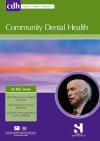Community Dental Health

- Cover Date:
- March 2016
- Print ISSN:
- 0265 539X
- Vol:
- 33
- Issue:
- 1
Fluoride varnish or fluoride mouth rinse? A comparative study of two school-based programs
Fluoride varnish or fluoride mouth rinse? A comparative study of two school-based programs
Objective: In many Danish communities, school-based fluoride programs are offered to children with high caries risk in adjunct to tooth brushing. The purpose of this field trial was to compare the caries-preventive effectiveness of two different fluoride programs in 6-12 year olds. Basic research design: Clinical controlled trial. Clinical setting: The 2-year study was conducted in Public Dental Clinics in a multicultural low-socioeconomic suburban area of Odense, Denmark with an elevated prevalence of caries compared to the city average.
Key words: fluorides, topicals, mouthwashes, cariostatic agents, Denmark
doi:10.1922/CDH_3869Keller04
- Article Price
- £15.00
- Institution Article Price
- £
- Page Start
- 23
- Page End
- 26
- Authors
- M.K. Keller, B. J. Klausen, S. Twetman
Articles from this issue
- Title
- Pg. Start
- Pg. End
- Dental service provision by oral health therapists, dental hygienists and dental therapists in Australia: implications for workforce modelling
- 15
- 22
- A randomized controlled trial of cluster audit and feedback on the quality of dental sealant for rural schoolchildren
- 27
- 32
- Identification of barriers and beliefs influencing engagement by adult and teen Mexican-Americans in oral health behaviors
- 44
- 47
- Are oral health-related self-efficacy, knowledge and fatalism indicators for non-toothbrush ownership in a homeless population?
- 48
- 53
- Sense of coherence modifies the association between untreated dental caries and dental pain in low-social status women
- 54
- 59
